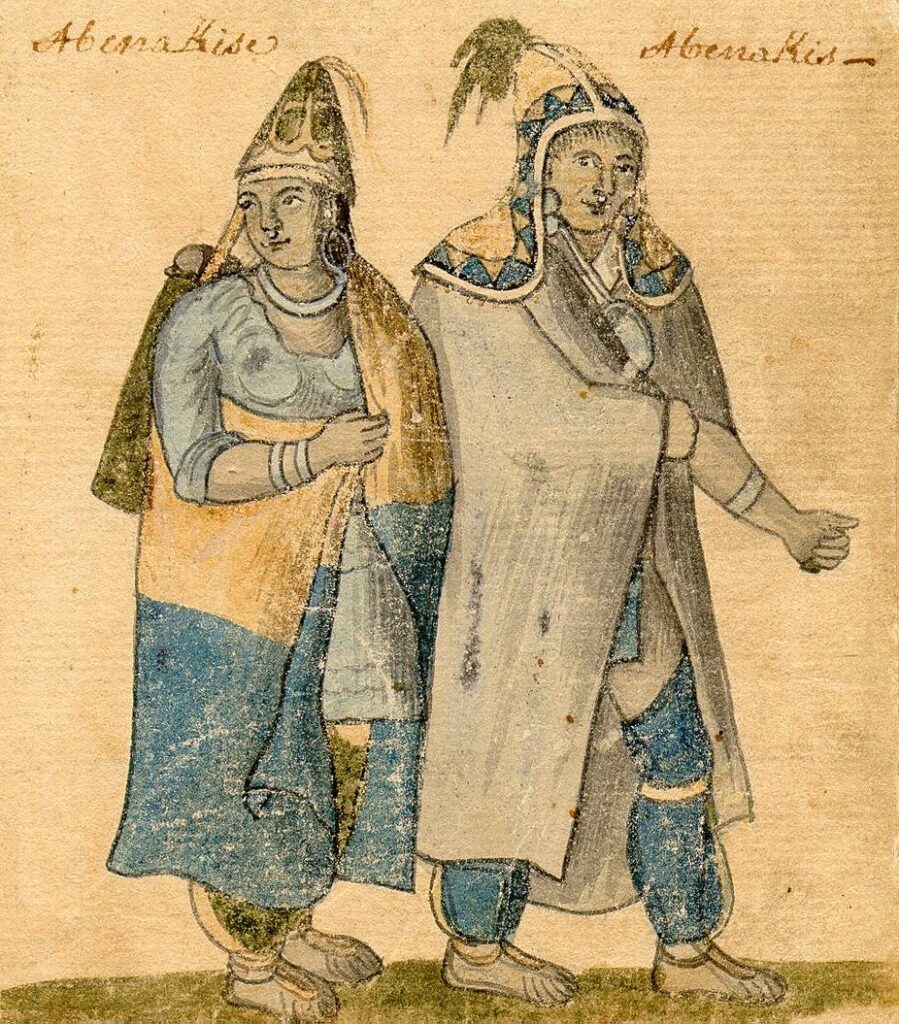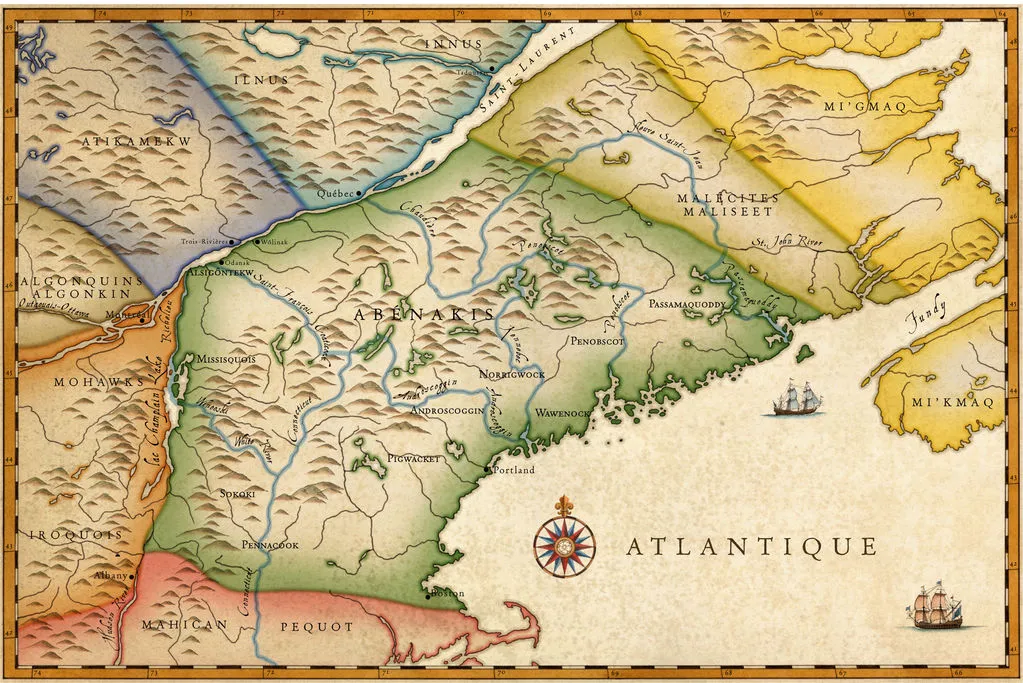The Abenaki tribe is one of the lesser-known Native American groups. Abenaki refers to the collection of several different tribes, including the Ossipee, Sokoki, Winnipesaukee, Penacook, Pigwacket, and Cowasuck.
Although each was an individual tribe, they spoke the same language and were collectively known as the Abenaki people.
The Abenaki tribe, also known as the Wabanaki or Abnaki people, had inhabited North America for thousands of years before European exploration.
Translated into English, their name means “People of the Dawnland” because of their eastern origins.
If you’re curious and want to know more about this ancient, noteworthy tribe, keep reading!

Where Did the Abenaki Tribe Originate From?
The Abenaki tribe had lived in North America for 11,000 years before Europeans first contacted them.
So, unfortunately, we only know a little about their history before the 1500s. What we do know, however, is that the Abenaki tribe was living in parts of the northeastern United States and Canada in the 1500s and 1600s.
Because the Abenaki tribe consisted of several different Native American tribes, also known as bands, they covered a vast swath of land.
The Abenaki lived in parts of New York, Vermont, Connecticut, New Hampshire, Maine, and Delaware in the US. In Canada, the Abenaki south-central and southeastern Quebec.
Pre-European History
Before European exploration into the United States, the Abenaki were a flourishing people group. Their only threat was occasional fighting with nearby Mohawk and Iroquois tribes.
As such, they didn’t need any form of centralized government or collective rule over the individual Abenaki tribes.
However, this changed in the 1600s when they formed the Wabanaki Confederacy to protect themselves from the famous Iroquois Confederacy.
Included in the Wabanaki Confederacy were other tribes that spoke a dialect similar to Abenaki, known as Algonquian. The Wabanki Confederacy could withstand attacks from the Iroquois and Mohawk people.
Post-European History
When Europeans first came to the New World in the 1500s, they had little impact on the Abenaki tribe. However, while they didn’t intentionally do anything at first to push the Abenaki tribe out of the New England states, they inadvertently brought European diseases along with them.
Because the Abenaki didn’t have any natural immunity to these diseases, primarily smallpox and measles, it’s estimated that 98% of the entire population perished.
In addition to disease, Native American tribes were also forced to pick sides in wars fought between European countries on American soil.
Unfortunately, the Abenaki sided with the French during the French and Indian War and the Wampanoag tribe during King Philip’s War. In both cases, the Abenaki tribe suffered severe defeats, further depleting their numbers.

Eastern, Western, and Maritime Abenaki
The Abenaki tribe is often divided into three groups: Eastern, Western, and Maritime. The Western Abenaki mainly lived in Vermont, New Hampshire, and Quebec.
The Eastern Abenaki lived mostly in Maine, New Hampshire, parts of Vermont, and other eastern New England states.
Finally, the Maritime Abenaki lived mostly in Maine and southern New Brunswick.
With each group, many smaller bands and tribes lived together collectively but not under a unified government.
For example, at the height of their power in the 1500s and early 1600s, there were an estimated 40,000 people in the Abenaki tribe.
What was the Abenaki Culture Like?
The Abenaki culture was unlike any other Native American culture at the time. While they didn’t have a centralized government, they operated as a cohesive people that relied on the integrity and honor of their fellow tribe members.
Instead of having permanent chiefs in charge of their collective tribe, the Abenaki consisted of small bands or clans with their civil chief.
If an argument or decision arose, the civil chief would act as an arbiter or overseer rather than making broad-sweeping decisions. The tribe or clan would then have to agree together.
In times of war, the Abenaki would then elect war chiefs for their various clans. In many ways, the Abenaki tribe, rather than the United States, had the first democratic government in North America.
Despite not having a collective government until the formation of the Wabanaki Confederation, there’s no history of in-fighting between individual Abenaki tribes.
The only divided loyalties we know of were during the Revolutionary War, and the War of 1812, when the Eastern Abenaki sided with the United States and the Western Abenaki sided with England.
Abenaki Economy
Individual tribe members didn’t own property, land, or many belongings. Instead, the Abenaki tribe shared all their land according to who most needed it.
They also took turns “owning” land according to the time of year, season, or family customs. Because of this, the Abeanki tribe flourished before European exploration.
The Abenaki were also a very resourceful tribe regarding their economy. They were self-sufficient in being skilled hunters, fishermen, gatherers, and trappers. Even today, the Abenaki are famous for their handwoven baskets and craftsmanship.
The Fur Trade
When France, Spain, and England were all competing with one another in the North American fur trade, the Abenaki tribe was able to take advantage.
Because they were skilled trappers and friendly toward Europeans, they quickly became a significant player in the North American fur trade.
Where is the Abenaki Tribe Today?
While the Abenaki were once proud and numerous people stretching across two provinces and five states and numbering upwards of 40,000 people, there are now fewer than 8,000 of Abenaki descent.
Of these, 1,000 live in New Hampshire, around 2,200 live in Vermont, and the remaining 5,700 live throughout Canada and other New England states.
While the Abenaki tribe has two reservations in Canada, they don’t have any designated reservations in the United States. So instead, the Abenaki people have done an outstanding job of assimilating into the mainstream culture throughout the New England states.
To this day, the Abenaki are loved for their history, folklore, and basketry craftsmanship.

